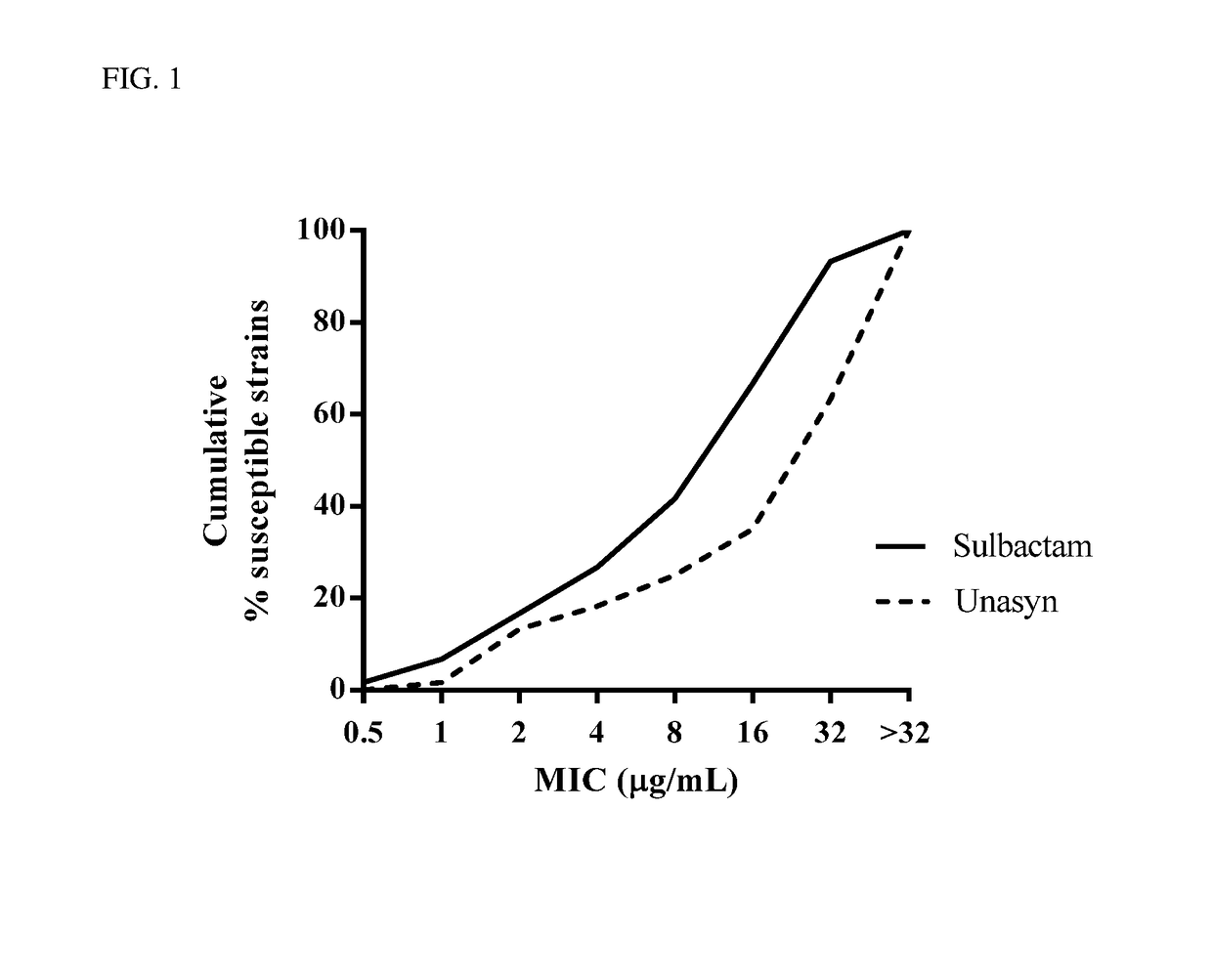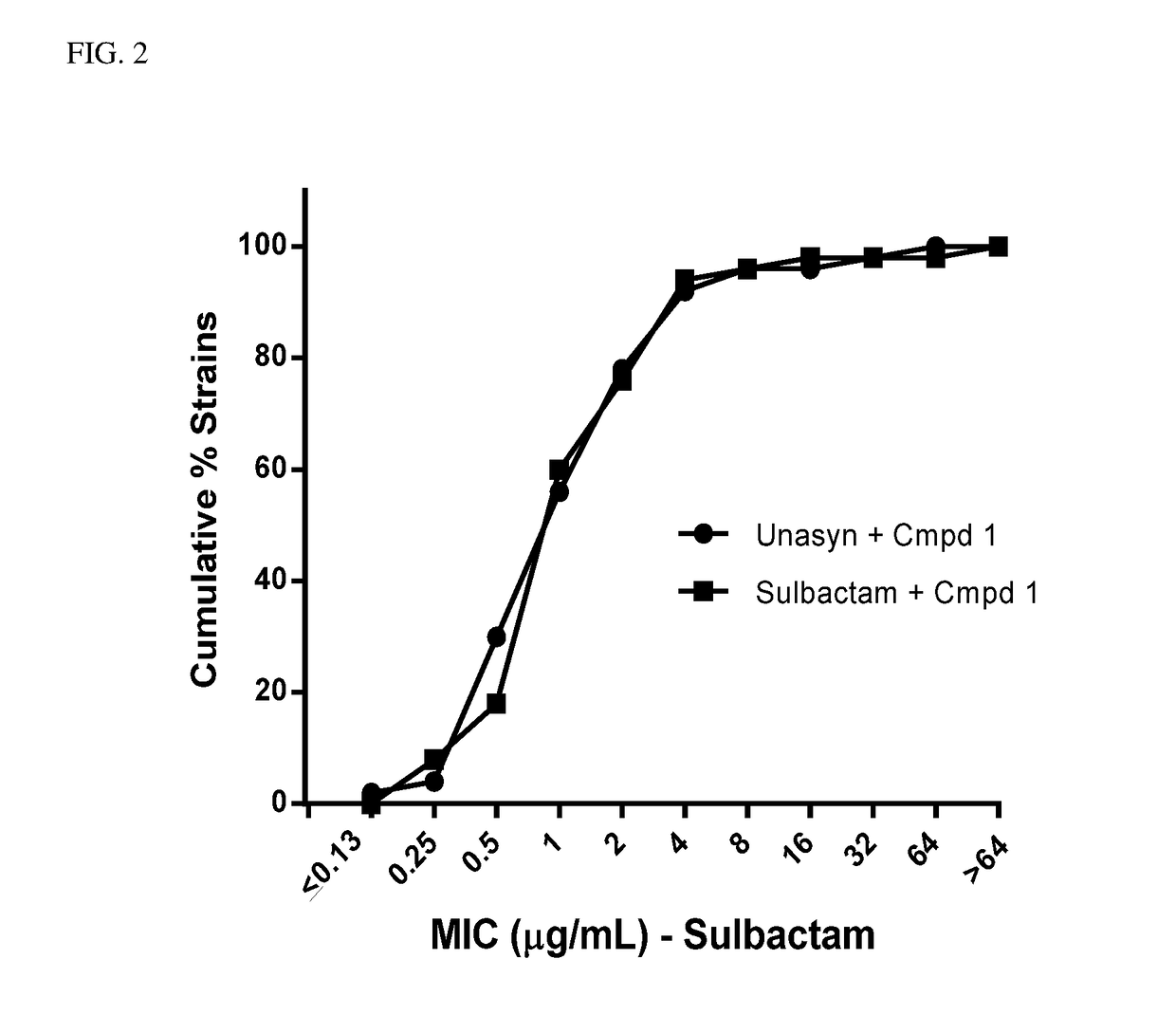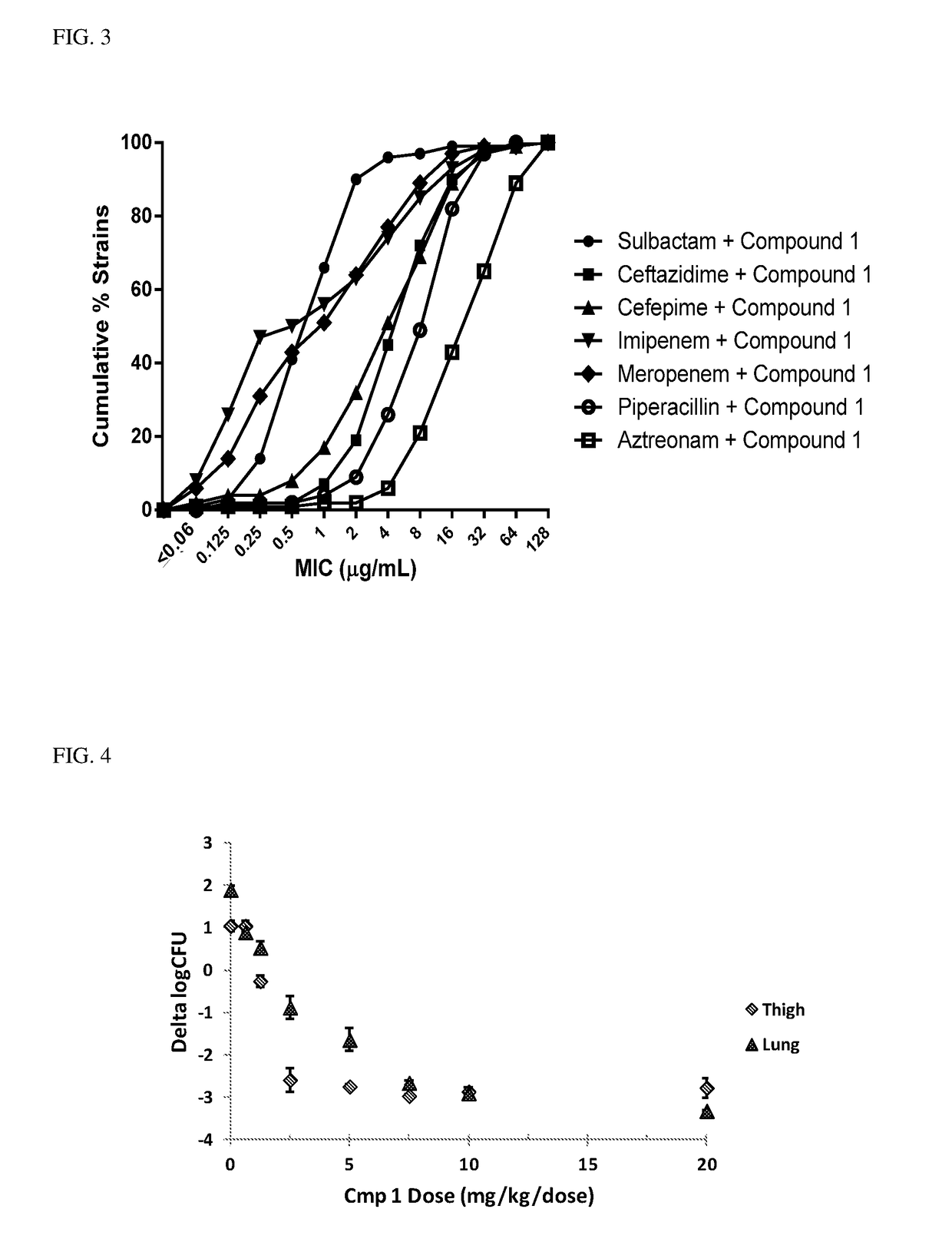Combination therapy for treatment of resistant bacterial infections
a technology of conjugation therapy and resistant bacteria, which is applied in the direction of antibacterial agents, drug compositions, heterocyclic compound active ingredients, etc., can solve the problems of ineffectiveness of currently available antibacterial agents, considerable morbidity and mortality, and limited effectiveness of currently available therapies
- Summary
- Abstract
- Description
- Claims
- Application Information
AI Technical Summary
Benefits of technology
Problems solved by technology
Method used
Image
Examples
example 1
l Activity of Sulbactam v. Unasyn®
[0125]Minimum Inhibitory Concentrations (MICs) were determined by the broth microdilution method in accordance with the Clinical and Laboratory Standards Institute (CLSI) guidelines. Clinical Laboratory Standards Institute: Methods for Dilution Antimicrobial Susceptability Tests for Bacteria That Grow Aerobically (10th Ed. (2015)) M07-A10. Activity of sulbactam was assessed against a panel of A. baumannii (n=60) clinical isolates. The panels were enriched with β-lactam-resistant isolates, caused by a variety of β-lactamases of all classes (A, B, C, and D). MICs were determined according to CLSI guidelines, and MIC50 and MIC90 values were calculated for the isolate populations. Following incubation, the lowest concentration of the drug that prevented visible growth was recorded as the MIC. Performance of the assay was monitored by the use of laboratory quality-control strains and commercially available control compounds with defined MIC spectrums, in...
example 2
Ampicillin on MIC for Unasyn® Versus Sulbactam Alone
[0127]MICs were determined for sulbactam+compound 1 and sulbactam in combination with ampicillin (Unasyn®)+compound 1 according to the method described in Example 1. The dose of Unasyn® was determined so that the total amount of sulbactam administered in both combinations was equivalent. Results show that the activity of Unasyn® is solely dependent on the sulbactam component for effectiveness, and ampicillin has no effect on the efficacy in treating A. baumannii. See FIG. 2.
example 3
of MIC for Sulbactam+Compound 1 in Recent Clinical Isolates
[0128]MICs for the combination of sulbactam+compound 1 were determined according to the procedure in Example 1 for a total of 825 recent clinical A. baumannii isolates. As shown below, the combination has an MIC90 of 4 μg / mL for all isolates, which is the expected breakpoint.
TABLE 2≦0.060.120.250.51248163264>642011n24205248451423100(n = 191)%1.02.110.527.223.623.67.31.01.60.500Cum %1.03.113.640.889.589.596.897.899.41001001002012n0153656674130000(n = 209)%00.52.417.226.832.119.61.40000Cum %00.52.920.146.979.098.61001001001001002013n0092457634723020(n = 207)%004.311.627.530.422.71.01.501.00Cum %004.315.943.473.896.597.599.099.01001002014n01163682541931204(n = 218)%00.57.316.537.624.88.71.40.50.901.8Cum %00.57.824.361.986.795.496.897.398.298.2100
Example 4: Sulbactam+Compound 1 Best Combination Partner for A. baumannii Infections
[0129]MIC90s were determined for the combination of a number of common antibiotics+compound 1 against...
PUM
| Property | Measurement | Unit |
|---|---|---|
| Cell angle | aaaaa | aaaaa |
Abstract
Description
Claims
Application Information
 Login to View More
Login to View More - R&D
- Intellectual Property
- Life Sciences
- Materials
- Tech Scout
- Unparalleled Data Quality
- Higher Quality Content
- 60% Fewer Hallucinations
Browse by: Latest US Patents, China's latest patents, Technical Efficacy Thesaurus, Application Domain, Technology Topic, Popular Technical Reports.
© 2025 PatSnap. All rights reserved.Legal|Privacy policy|Modern Slavery Act Transparency Statement|Sitemap|About US| Contact US: help@patsnap.com



